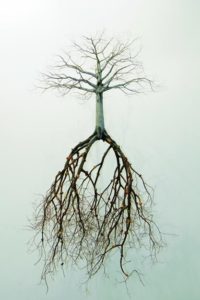 The City of Austin defines tree physiology by three areas. The roots, the trunk and the crown. The way the city defines trees helps them to determine design standards for the preservation of trees in the city. This week, we will focus on the root section of a tree. Please read the following for more detailed information.
The City of Austin defines tree physiology by three areas. The roots, the trunk and the crown. The way the city defines trees helps them to determine design standards for the preservation of trees in the city. This week, we will focus on the root section of a tree. Please read the following for more detailed information.
Roots provide three primary functions for trees. They are:
- Support,
- Intake of nutrients and water,
- And storage of food reserves.
Cutting a large root has a triple effect. It can:
- Reduce the tree’s anchorage,
- Destroy the nutrient intake potential beyond that point
- And reduce food reserves substantially.
Root Basics
Tree roots need to breathe in order to survive. There exist certain conditions that restrict the availability of oxygen. These issues can suffocate roots. Such conditions may result in the accumulation of carbon dioxide and other toxic gases which can adversely affect associated soil microfauna as well as the roots. Soil compaction, the addition of new soil and water pooling near the tree’s trunk can all cause problems for a tree’s root system.
Trees have a natural balance between the roots and crown. If you destroy a portion of one then you may likely destroy a portion of the other. For that reason, it’s important to assess a tree before making any changes to it.
The roots of adjacent trees intermingle through the sharing of rootstock via several stems. They graft together according to tree species or trees that just share a proximity to each other. Therefore, it’s important to make a clean cut when severing roots rather than tearing them. Jagged roots are generally unable to produce the callous growth that is necessary to close these wounds. As a result, decay becomes more extensive. Cleanly-cut roots will generally generate new roots more readily than torn ones.
Root Locations
Soil pH is an important factor in the functioning of a root system. Austin-area trees grow in traditionally highly alkaline soils. The lime that leaches from concrete can increase the alkalinity to potentially lethal levels for trees. Approximately 99% of a tree’s roots occur within the first 3 feet of soil. Most of the fine feeder roots, which collect moisture and nutrients for the tree, are located in the first 4 inches of soil. Generally, tree’s root system extends as much as 2-3 times the distance to the dripline.
For more information on tree physiology, stay tuned to our blog. We will follow up with the crown and trunk in subsequent weeks.











